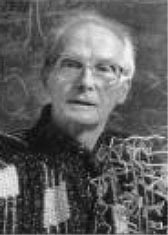

William N. Lipscomb

Born December 9, 1919 in Cleveland, Ohio, USA.
Abbott and James Lawrence Professor of Chemistry Emeritus, Harvard University.
WWW: external link
William Lipscomb was educated at the University of Kentucky (BS 1941), Harvard University (MA 1959), Calfornia Institute of Technology (PhD 1946). He was Assistant Professor to Professor of Physical Chemistry at the University of Minnesota (1946–59) and Professor of Chemistry Harvard University (1971–).
Guggenheim Fellowship Oxford (1954–55) and Cambridge (1972–73). NSF Senior Fellow (1965–66). Member of the National Academy of Sciences, Fellow of American Physical Society, American Chemical Society, American Academy of Arts and Sciences, Foreign Member of the Netherlands Academy of Arts and Sciences.
Advisory Boards: Linus Pauling Institute of Science and Medicine, Dow Chemical Company, Robert A. Welch Foundation, Daltex Medical Science, Nova Pharmaceutical Corporation, Gensia Pharmaceuticals. Honorary Degrees: DSC University of Kentucky, Long Island University, Rutgers University, Gustavus Adolphus College, Marietta College, Miami University, University of Denver, Ohio State University.
Nobel Prize in Chemistry (1976).
Howe Award (American Chemical Society), Peter Debye Award, Remsen Award, Welch Foundation Lecturer, Distinguished Lecturer Howard University, Phillips Lecturer (University of Oklahoma), Priestly Lecturer (Pennsylvania State University), William Pyle Phillips Lecturer (Haverford College), Baker Lecturer (Cornell University), Coover Lecturer (Iowa State University), Weizmann Lecturer (Rehovoth Israel), VantHoff Centenary Lecturer (University of Leiden), G.N. Lewis Lecturer (Berkeley), Renaud Lecturer (Michigan State University), Dreyfus Lecturer (University of Southern California), Harvard Lecturer (Yale), Centenary Lecturer (Chemical Society), Dreyfus Distinguished Scholar (Univeristy of Chicago), Probst Lecturer (Southern Illinois University).
Important Contributions:
An obituary can be found at
http://news.harvard.edu/gazette/story/2013/06/william-nunn-lipscomb-jr/.